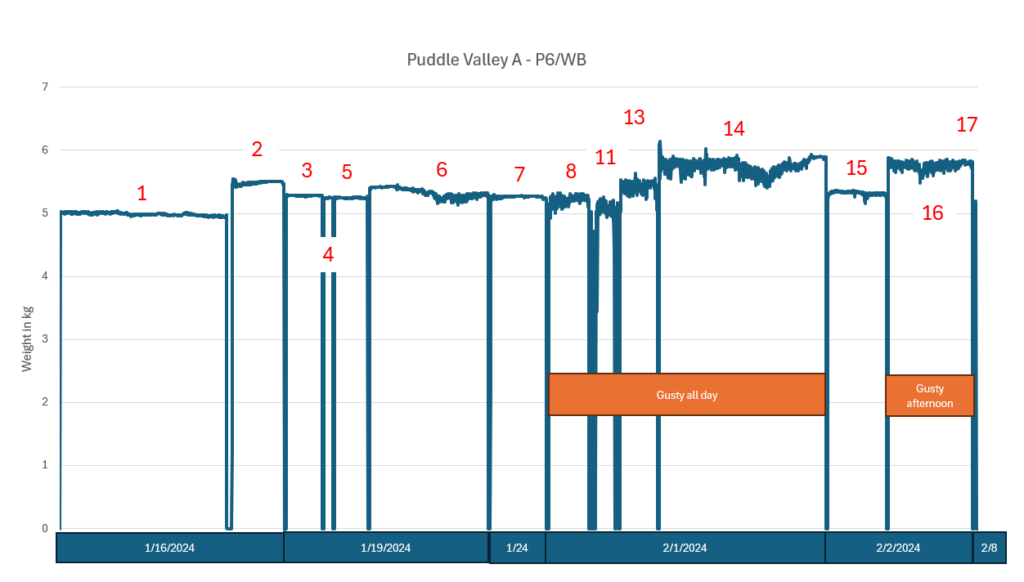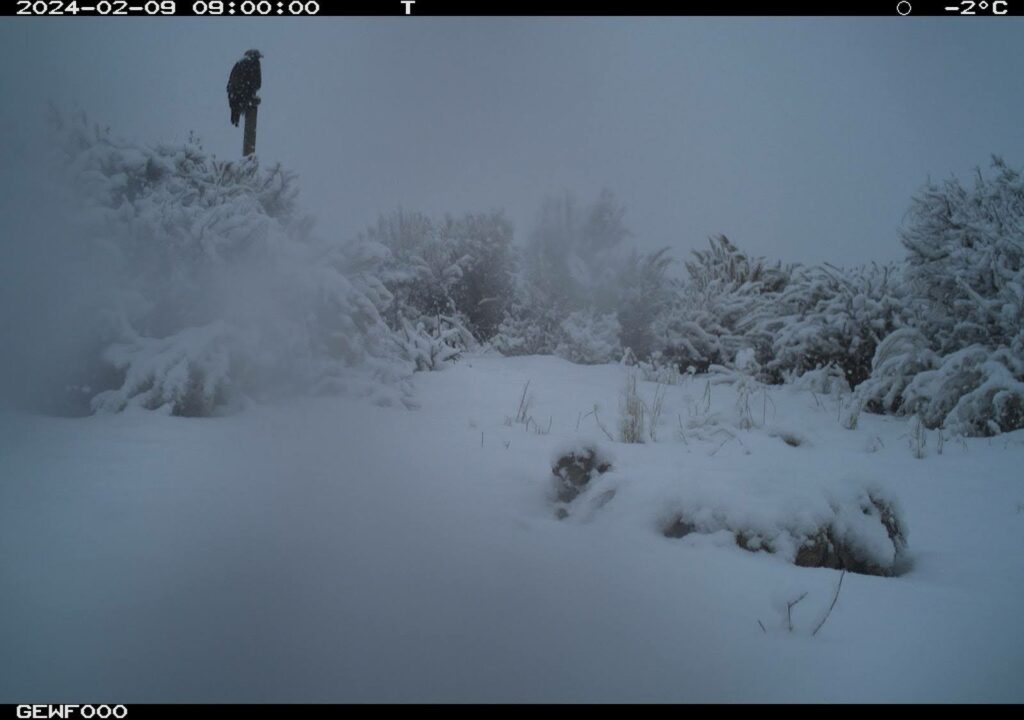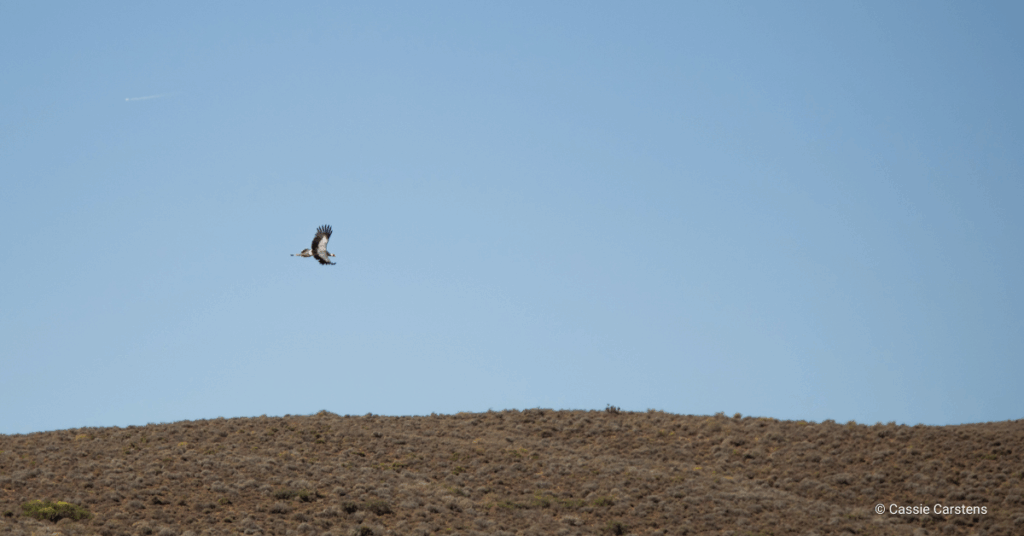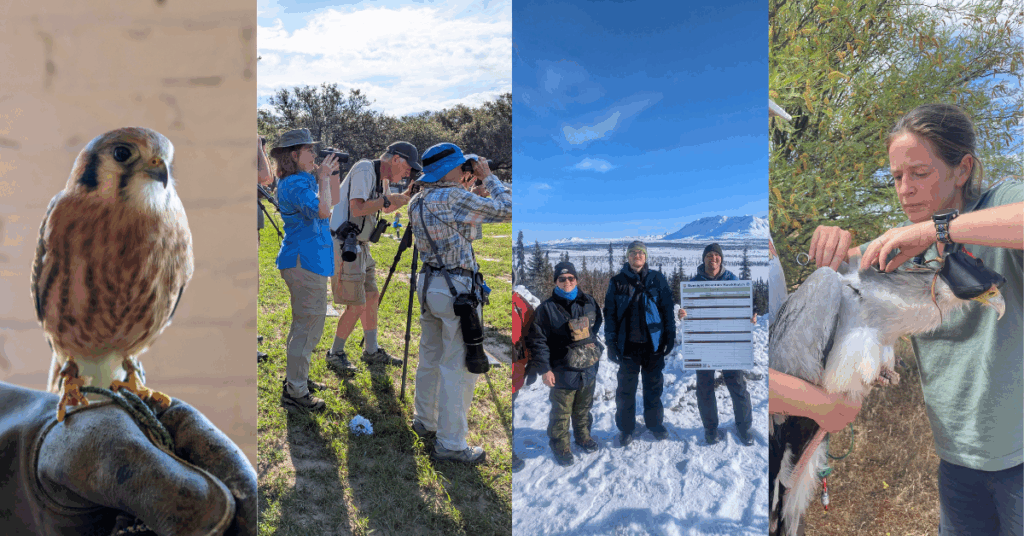Out in the rugged West Desert of Utah, the weight of Golden Eagle conservation is on our mind, quite literally. What began as a project to supplement the diets of these apex predators in the lean winter months has transformed into a mission to develop innovative, non-invasive methods to monitor their health and behavior. Concerns about Chronic Wasting Disease (CWD) transmission led us to re-route research to explore another facet of our research more deeply. This new approach centers around “Passive Perch Scales,” which we’ve been developing and refining since we first thought of the idea in the Fall of 2022. As you read this, I’m likely out in the heart of the West Desert, hiking across remote terrain and carrying equipment to set up these scales on prominent, well-visited perching points. These scales will allow us to collect critical data on eagle health and behavior while we continue to pursue other options to increase their winter food resources.

The Transition to Passive Perch Scales
Passive Perch Scales are an innovative approach to wildlife monitoring, allowing us to weigh and gather data on eagles as they naturally land on artificial perches. This is our third revision of the scale, and we’ve spent the offseason making improvements to its durability and accuracy. Our goal is to create a system that seamlessly integrates into the eagles’ environment, requiring minimal disturbance while providing maximum insight.

Each scale installation is guided by tracking data, which helps us determine the eagles’ preferred winter perching locations. By positioning the scales at these key points, we’re able to collect information on the eagles’ weight, health, and behavior as they go about their natural routines. The scales provide a non-invasive way to observe changes in the birds’ physical condition, particularly during the harsh winter months when survival can be a struggle.
A Ton of Data and Insights
The scale system isn’t our only source of information. Over the last three years, we’ve captured over three million photos of eagles foraging in the vast desert landscape, with the help of field cameras placed on the scales. As we continue to expand our Passive Perch Scale network, we’re constantly analyzing these images and cross-referencing them with other data to deepen our understanding of Golden Eagle winter ecology.
This transition is already yielding exciting results. In the last season alone, we recorded 171 eagle-weighing events across five widely spaced scales, with seven recognizable individuals regularly using the perches and providing us with incredible insights into their day-to-day behavior and corresponding weights.

Implications for Conservation and Beyond
The Passive Perch Scale project offers more than just insights into the eagles’ winter habits. By monitoring their health and weight over time, we can start to understand how these birds adapt to environmental stressors, a critical piece of knowledge as we face ongoing climate and habitat changes. These scales could also have broader applications in avian husbandry practices, where regular weight monitoring is essential for maintaining bird health. The scales’ hands-off nature can provide a unique opportunity for rehabilitation centers, wildlife sanctuaries, and zoos to monitor their birds without the need for frequent handling, which can be stressful for any bird. This reduced human interaction could especially be beneficial for birds in rehab, allowing them to stay as wild as possible and increasing their chances of successful reintroduction to the wild. We plan to publish the scale designs making this tool widely accessible to support avian conservation efforts and helping other researchers and wildlife centers develop best practices for bird care and management.
Looking Ahead

The Golden Eagle Winter Ecology Project has come a long way from its early days of providing supplemental food. With each season, we’ve adapted and learned, guided by both necessity and a commitment to responsible conservation. The switch to Passive Perch Scales is a major step forward, enabling us to observe and support these magnificent birds without the current concerns associated with supplemental feeding.
The journey to each scale installation site is physically demanding—lugging equipment through miles of rugged desert terrain is no easy feat. But as I stand on a remote ridge, overlooking the snow-dusted peaks of the West Desert, I feel an incredible sense of purpose. We’re capturing the story of these eagles’ lives one perch at a time, contributing to a growing body of knowledge that will hopefully ensure their survival for generations to come.
As we move forward into another season, we’re motivated by each improvement, each data point, and each feathered visitor to our scales. This transition reflects the evolution of conservation science: always learning, always adapting, and always looking for ways to leave a positive impact on the wild world around us.
Thank you to the JAKA Foundation, Great Salt Lake Audubon, David Slater, Dugway Proving Ground, and our current Golden Eagle Camera Club members!
Join us in our mission to protect and understand Golden Eagles by becoming a sponsor of a camera for the project—your support will help us capture invaluable data and bring us one step closer to securing a future for Golden Eagles in the wild. https://hawkwatch-international.myshopify.com/products/eagle-watch
This blog was written by Cody Allen, HWI’s Field Biolgist You can learn more about Cody here.



